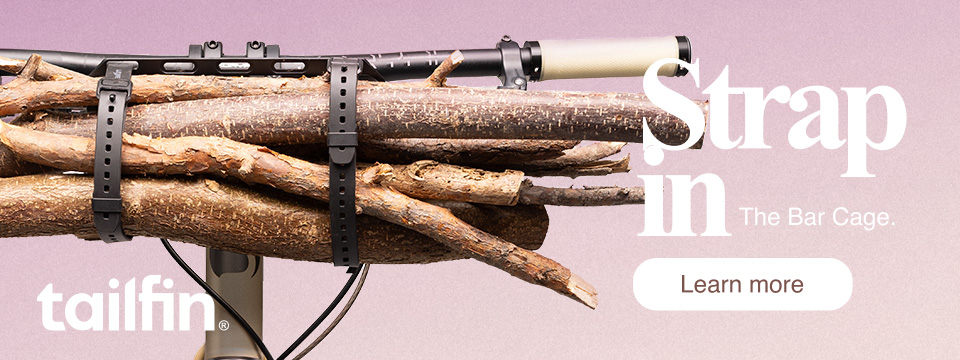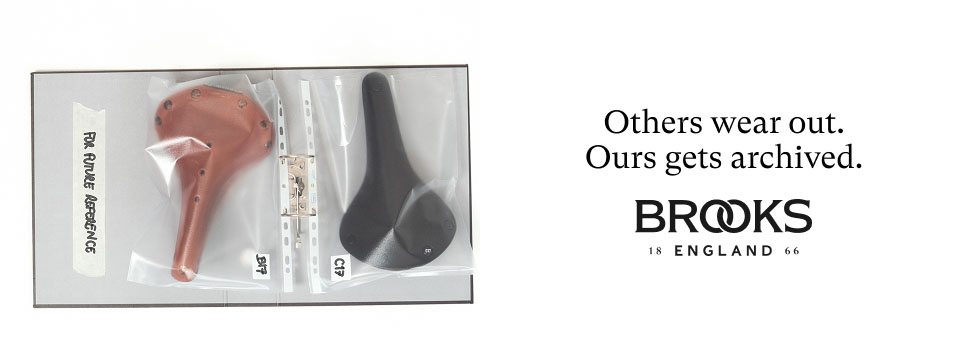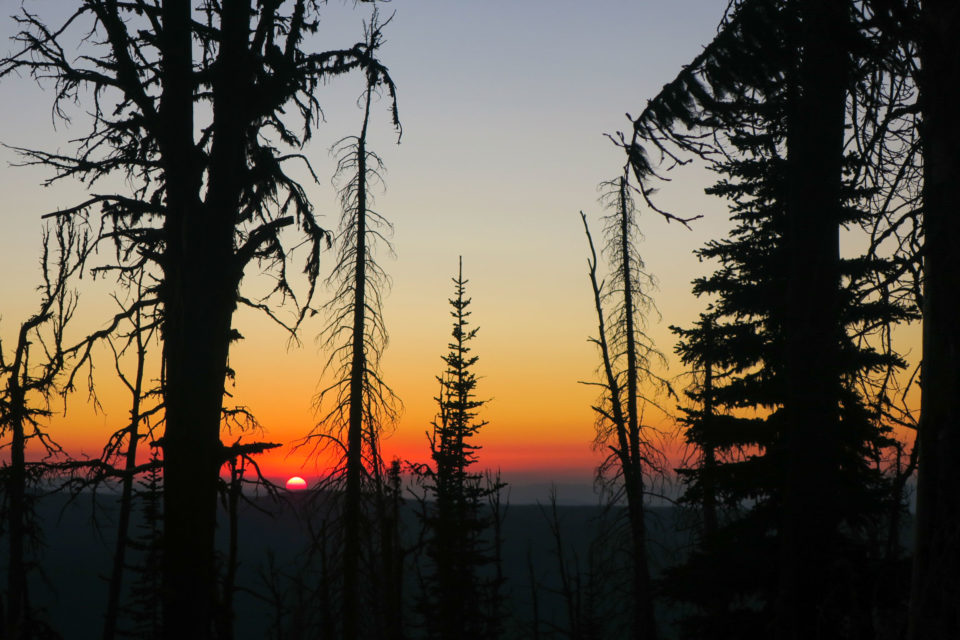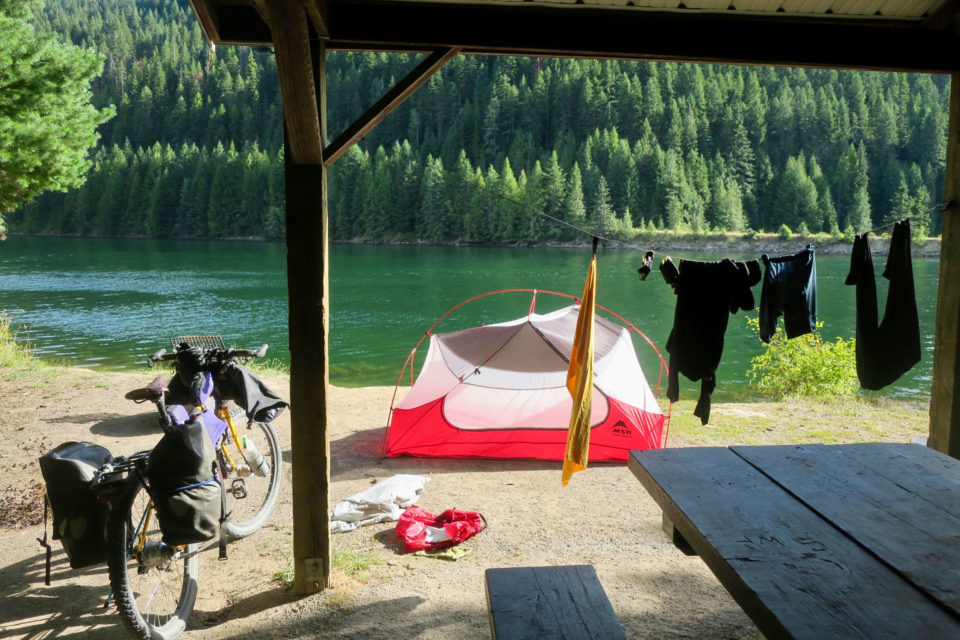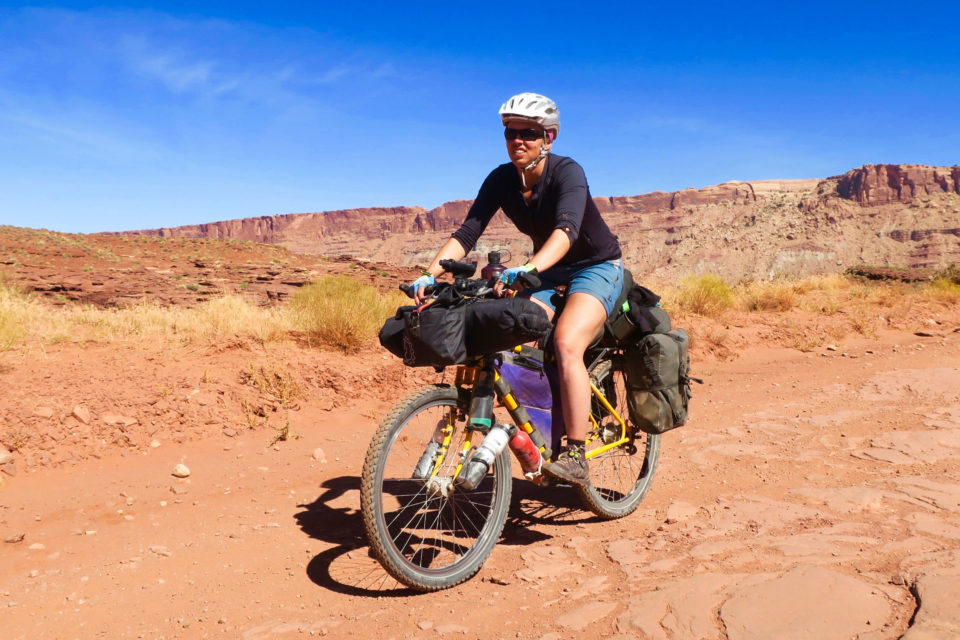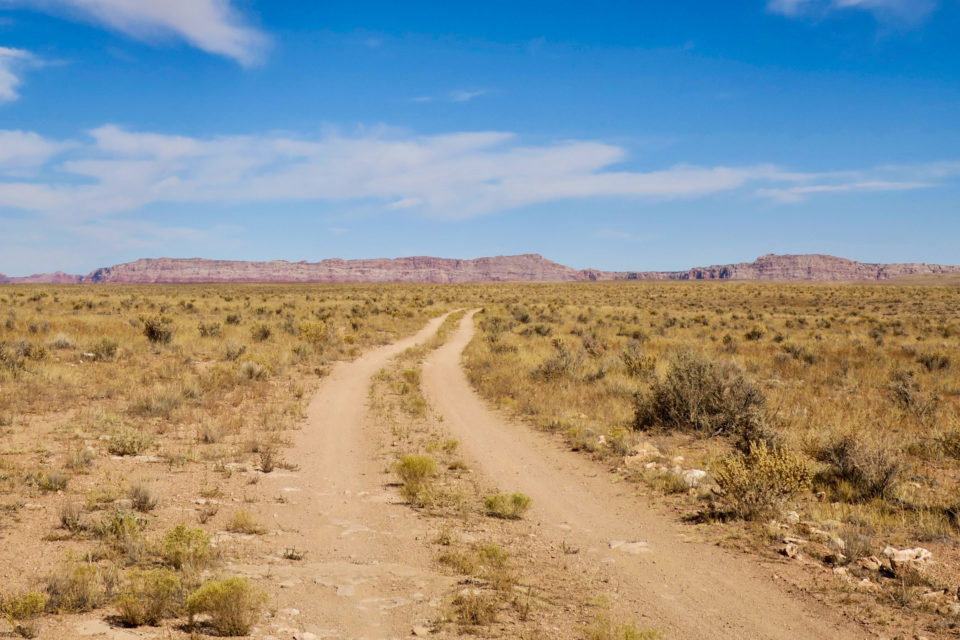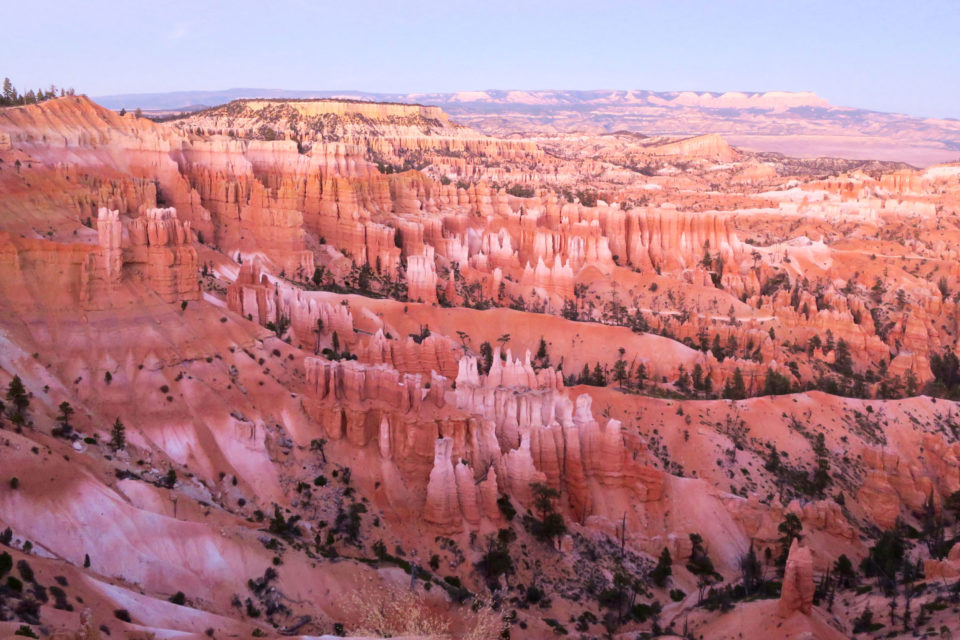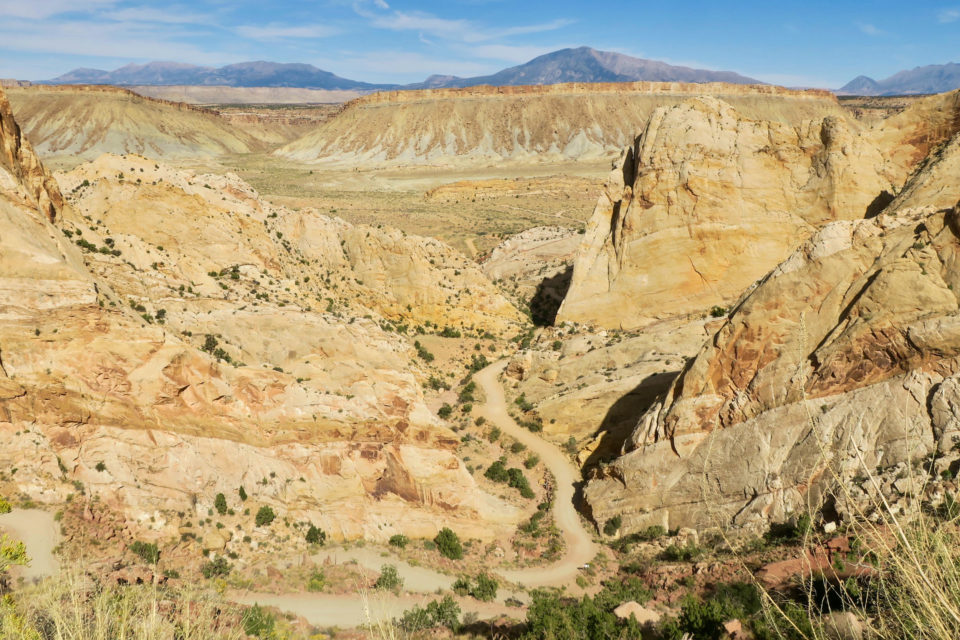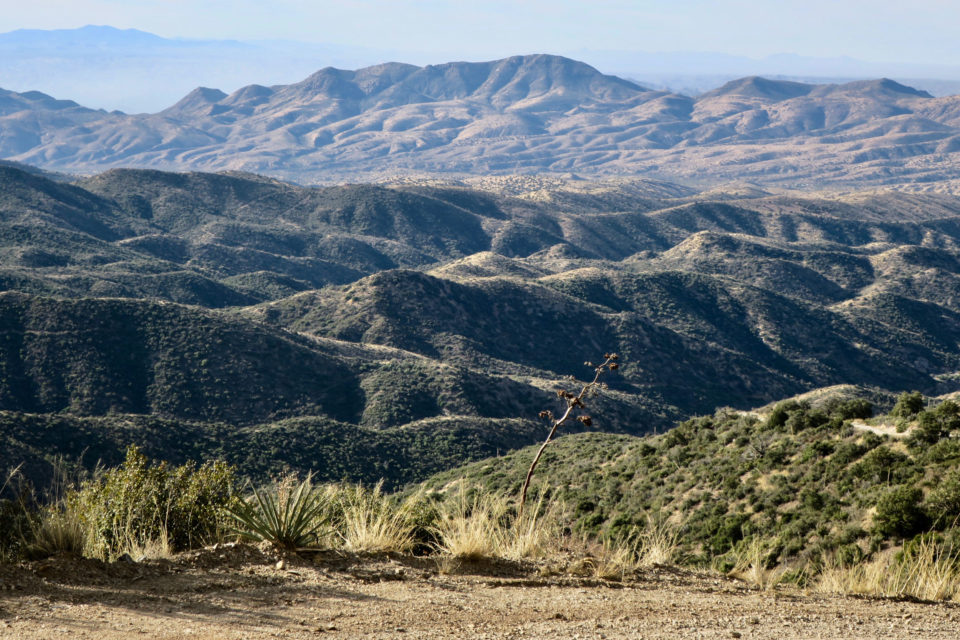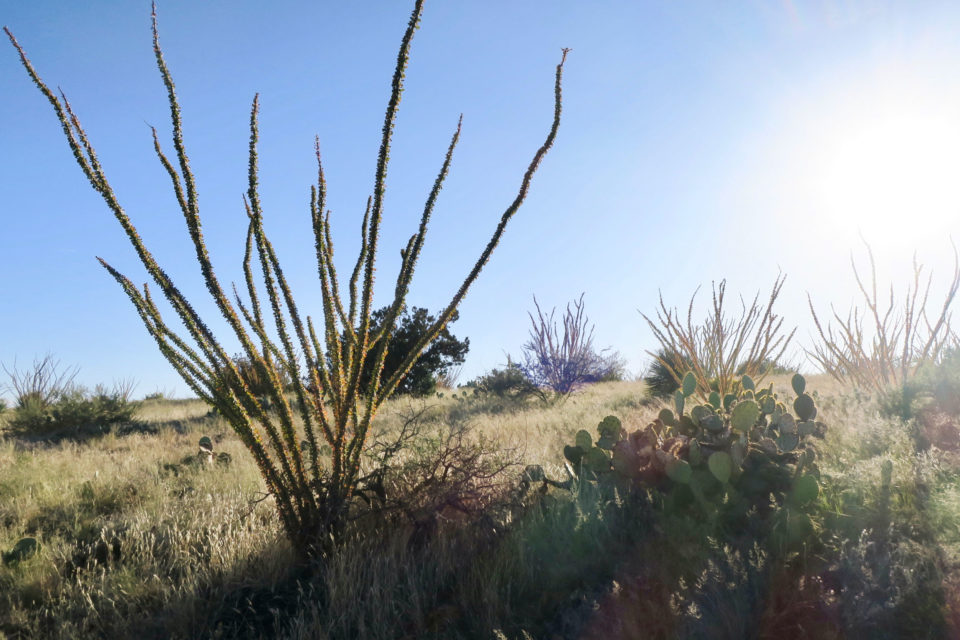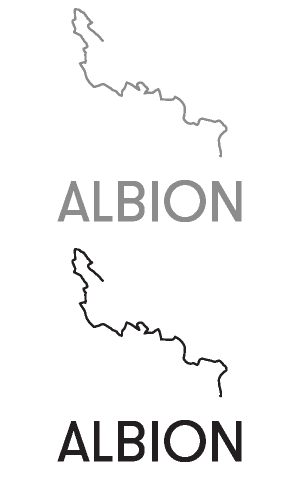The Call of the West
Tara Weir spent nearly three months riding along the Western Wildlands Route between Canada and Mexico, and she put together this reflection on gaining perspective as she slowly made her way through the ever-changing landscapes of the American West. Read about her experiences on the route and how they’ve stuck with her here…
PUBLISHED May 28, 2020
Words and photos by Tara Weir (@followmargopolo)
Legs burning, I breathed in the cool air as I reached the top of the Hoodoo Pass, the divide between Montana and Idaho. The surrounding hills were bright green and dotted with conifers. A glorious descent brought me down to a narrow dirt road that hugged the Clearwater River. Cradled by forested mountains, I pedalled along its path, tracing each curve.
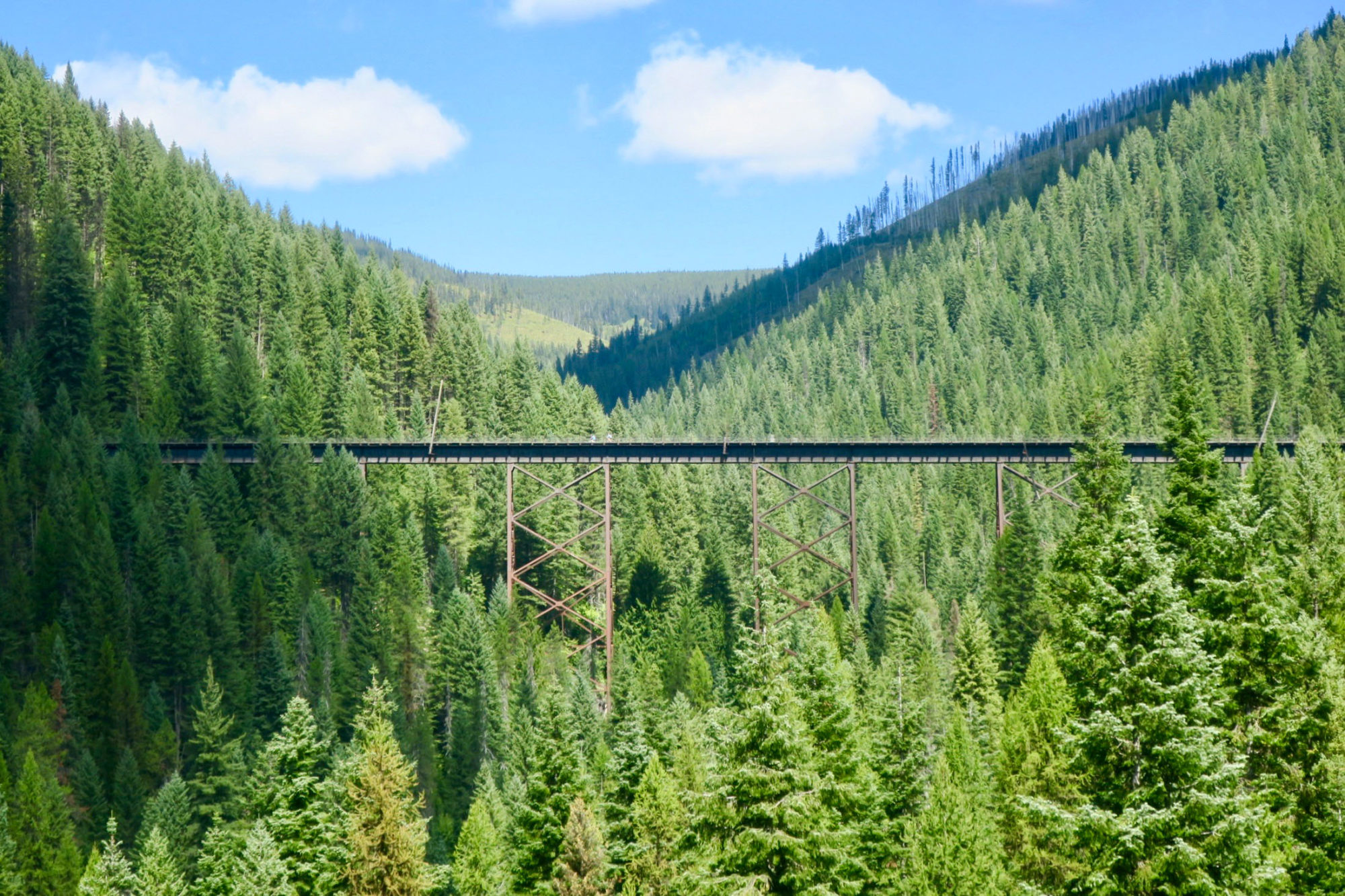
On the Western Wildlands Route in Montana and Idaho, my life revolved around the rivers. Landscapes rose and fell with their passages. Their cool waters provided a refuge after humid summer days. I drank out of them and washed away the day’s sweat and dirt. In Southern Idaho the land dried out, giving way to sagebrush plains. Water was no longer plentiful; it became sacred. Then, the landscape defied imagination, reaching skywards and shifting into the canyons and deserts of Utah and Arizona. On a bikepacking trip, all change happens slowly.
My wheels traced the change in the land, grinding up and over mountains as it swelled and freewheeling as it fell. My ride following the Western Wildlands Route brought my long-held dream of exploring the American West to life.
As a teenager, I would close my eyes and imagine the deserts of Utah and Arizona. The canyonlands would begin to draw themselves and materialize. I love the stark emptiness of the desert I had seen in photos. In general, there’s something deeply satisfying about being out in a remote landscape, solo, exposed to the elements.

In Montana and Idaho, the landscape changed from healthy, lush green mountains to burnt forests. Crossing the rugged Magruder Corridor through charred land exposed the vulnerability of such a wilderness. The black, skeletal trees pointed like spears towards the sky. They provided no shelter and held no secrets. The route crossed the Bitterroot Mountains, following rough 4×4 roads stuck between two of the largest wilderness areas in the lower 48. The traverse was rocky and often very steep, draining all of my energy reserves. On the second day of the crossing I had nothing left, barely making it up one climb after pushing for half a mile. It was the only point of the whole trip when I thought I might not be physically capable to make it the whole way.
I camped on a small pull out and collapsed in my tent, exhausted. As darkness fell, a spectacular sunset silhouetted the burnt, leafless trees. It was silent, but for a few crows cawing in the distance. As the colours brightened, I could feel the day’s pain slowly diminishing. I remembered why I was out there. I knew the next day would bring more hills, more challenges, but I was thrilled to be travelling in such an extraordinary place. Nature has a restorative power.

Continuing through Idaho, the land became more arid, more desertlike. Large swaths of Ponderosa pine and sagebrush became familiar sights. They became companions throughout the trip, reappearing every now and then, all the way to Arizona. The landscape grew wider before me and I felt incredibly small in its presence.
The Snake River Plain in Idaho defined solitude. I followed a dirt road that sliced through a kingdom of sagebrush. It was flat, wide-open, exposed. I watched a storm gather and approach in the distance. Here, weather events could be seen unfolding simultaneously, like a performance on a stage. In anticipation of foul weather, I stopped riding short of my daily distance goal and set up my tent. From my shelter, I watched as the skies darkened and sudden gusts whipped the sides of the tent. The rain fell in sheets and the wind became fierce. I held up the sides of the tent in fear they would collapse. Eventually, the rain stopped and the wind died down. I watched the storm move away from me and across the plain instead of disappearing. Dark grey clouds hung like a smoky ceiling over top of the blue sky underneath. Beams of sunlight pierced through, painting the sage a golden colour. It was a spectacular sight. The following morning, the skies were calm. I packed up my bike and continued south towards Utah.

In Utah, I decided to detour from the Western Wildlands Route and opted to follow bits of the Plateau Passage. I had wanted to see the canyonlands around Moab and the Western Wildlands Route mainly stuck to the higher plateaus. Getting to Utah was a big reason for taking this journey, to cycle through the red rocks and canyons I’d long dreamed about. I would rejoin the main Western Wildlands Route at Bryce Canyon before heading south into Arizona.
These types of places fuelled my desire to keep exploring the world by bicycle. I soaked in landscapes that seemed to defy the imagination and my definitions of the living world. That night, I camped on a high ridge overlooking the land of rock with all its inconceivable and elegant formations. It burned bright red as the sun set. This was what I had come for. This is what I had imagined as a teenager. Utah captivated me day after day, from Canyonlands, to the Burr Trail, to the hoodoos of Bryce Canyon. At Bryce Canyon, I was back on the Western Wildlands Route once again and turned my wheels south towards the final state.
Arizona welcomed me in with a familiar sight: swaths of sagebrush and Ponderosa pines, ever present in each state I passed through. In between higher elevation pine and spruce forests were great swaths of desert. The Navajo Nation segment of the Western Wildlands Route brought back the feeling of solitude I’d experienced earlier in Idaho on the Snake River Plain. I only met a few people on the two-day crossing. One Navajo family was hauling a large water tank out to their home. I saw little in the way of civilization besides a few hogans (the traditional Navajo structure) out in the distance. I stopped at the designated campsite for the night, high up on a ledge. It was persistently windy, whipping up thin clouds of dust.
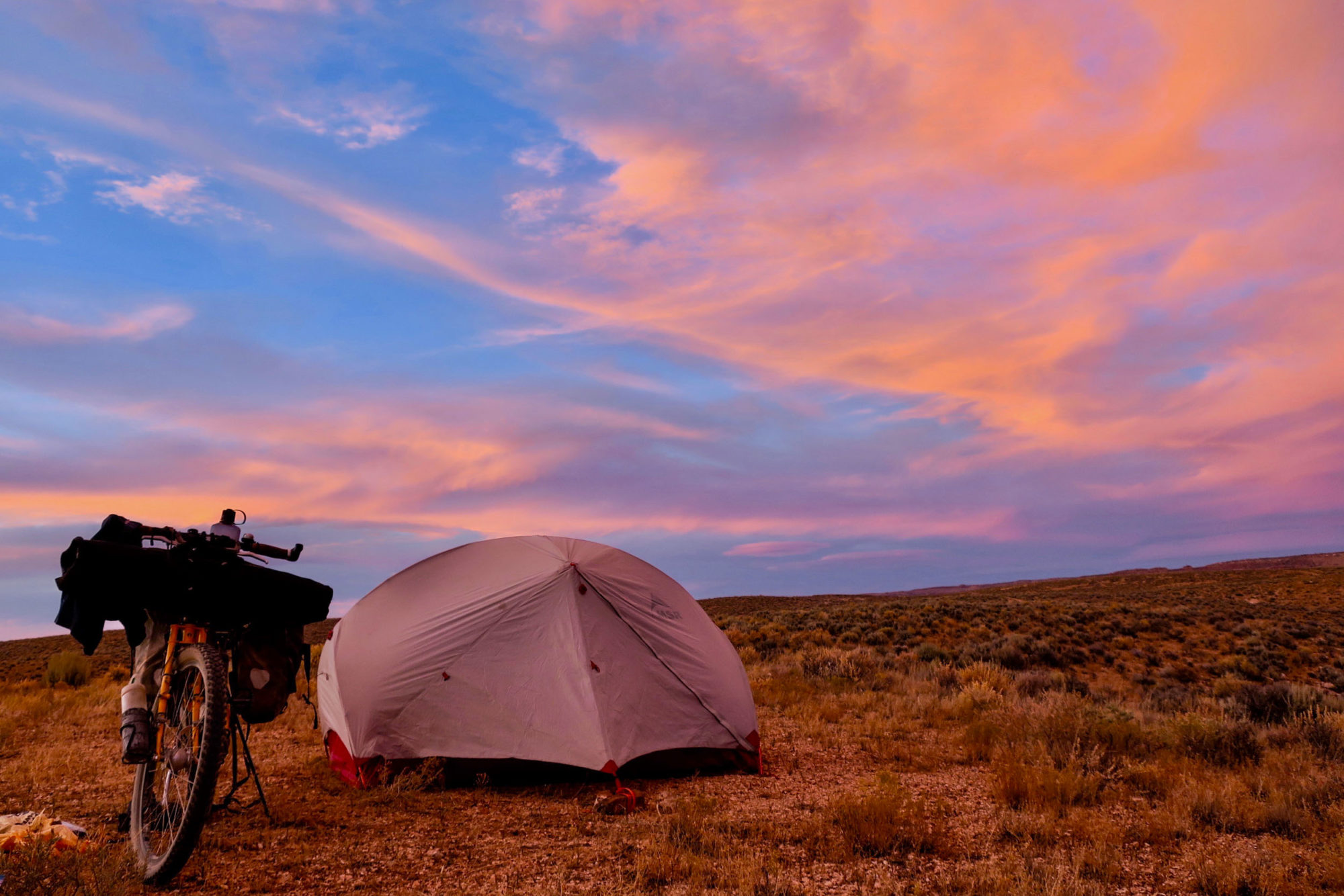
An extraordinary thing happened after I finished setting up my tent. The wind died instantly. The sun was beginning to set, casting out streaks of oranges, pinks, and purples across a still piercing blue sky. High on that ledge, the fierce colours surrounded me on all sides. If I were a religious person, I might say that at that moment, a God revealed itself. I felt so incredibly small and all I could see and feel was sky. I also felt intense loneliness. Even powerlessness. I wanted someone to be there with me to be able to grasp the magnitude of what I was experiencing. Eventually, the blue deepened to navy, then to black, and the brilliant colours faded into darkness. It turned into a silent, starless night. The next morning, I left the Navajo Nation and briefly entered a world of tourism and chaos.
Large tracts of wilderness, like the Navajo Nation crossing, were occasionally interrupted by short shocks of civilization. I arrived in Cameron, Arizona, home to a large trading post with Navajo crafts and cheesy Grand Canyon souvenirs. While I had planned to pay for a campground, I was told by the hotel desk clerk that I could camp in a parking lot behind the gas station for free. I pitched on a small dirt square just off the concrete. This wasn’t my first time, I was also offered a free spot behind the gas station “town” of Soldier Summit, Utah. It was a funny scene that straddled the line between wildness and modern life. I already missed the silence of the Navajo Nation, but sometimes such stark contrasts are needed. It makes me appreciate those places that much more. I took out the earplugs I’d bought in Soldier Summit and the diesel hymns of the highway soon faded out as I drifted off to sleep.
Arizona’s geography was more diverse than I could have imagined. Pine forests, green mountains, cinder cones, and the iconic pink cliffs of Sedona. So much more than just desert. As the land changed over the course of the journey, so did my physical appearance. I had lost nearly 25 pounds, any exposed skin was sunburnt, and my lips were swollen and cracked. I was hardened by the road. At the top of a big climb just above Flagstaff, I met a couple hiking. I told them about my trip and my battle with the intense sun. They gifted me a zinc sun stick. I joked that I must look road weary. “You look feral,” the guy said, “but in the best way.”
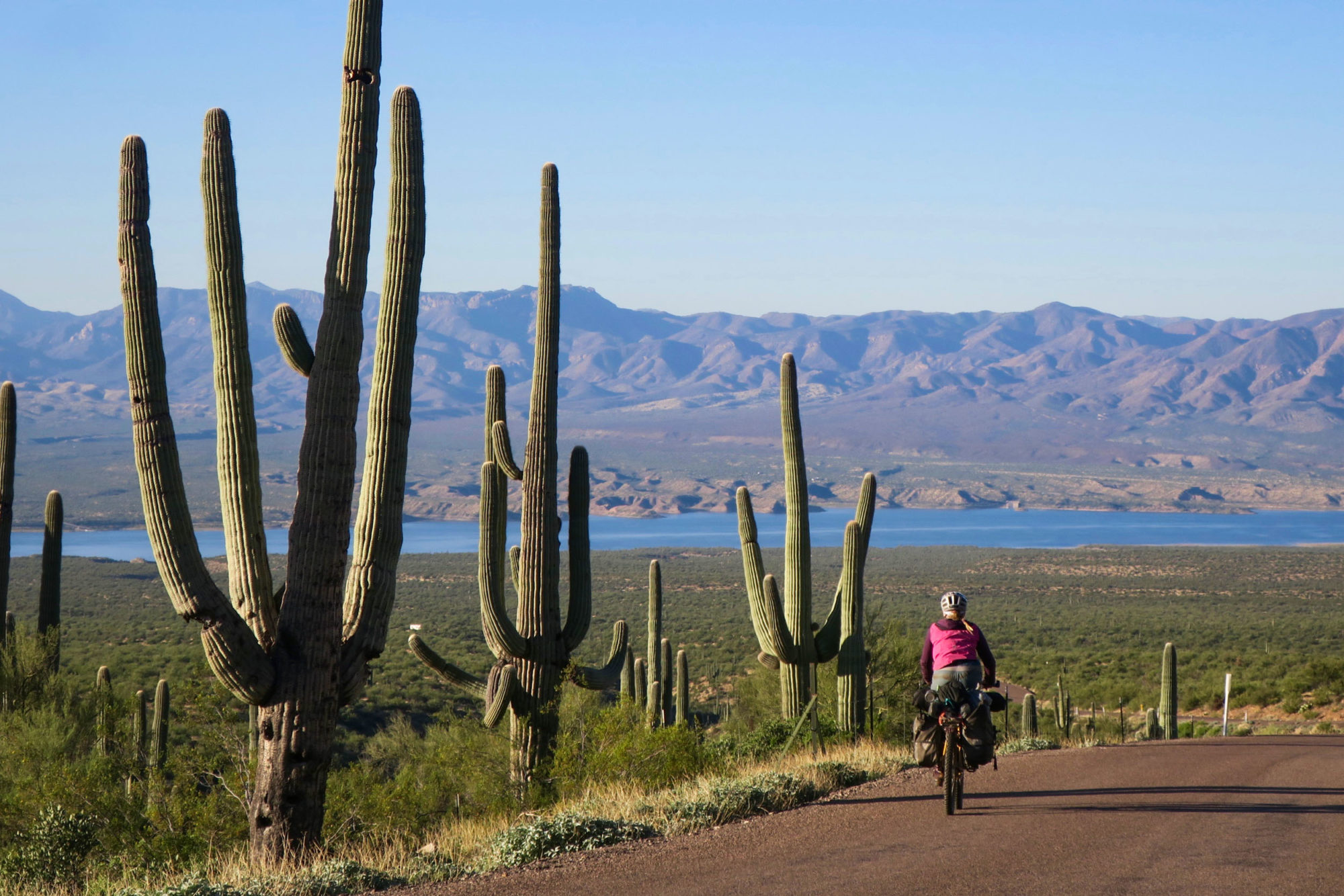
The end was pretty anticlimactic: a tall border fence dividing Mexico and the USA. After half a mile of pushing on an overgrown trail through thorn bush, I made it. I was exhausted, sore, and sunburnt. It was one of the best trips I have ever done. After 37,000 kilometers of travel by bicycle in 21 countries, my desire to explore this strange and beautiful planet felt stronger than ever.
Although the United States is a country with a fairly high population density, there are vast tracts of remote and spectacular public lands to be explored. Being out there, solo, on a bicycle took me back to my true self. When you’re alone, you only have to answer to yourself. The experience of being alone in a vast landscape always casts a spell on me and continually draws me back to trips like this.
I believe that when we become attached to a place, we can become more passionate about its conservation. And I think this is possible through the creation of bikepacking routes such as this one. These places demand respect. Alone on the desolate Snake River Plain and in the canyonlands of Utah, I was reminded that I am a part of something bigger. Much, much bigger.
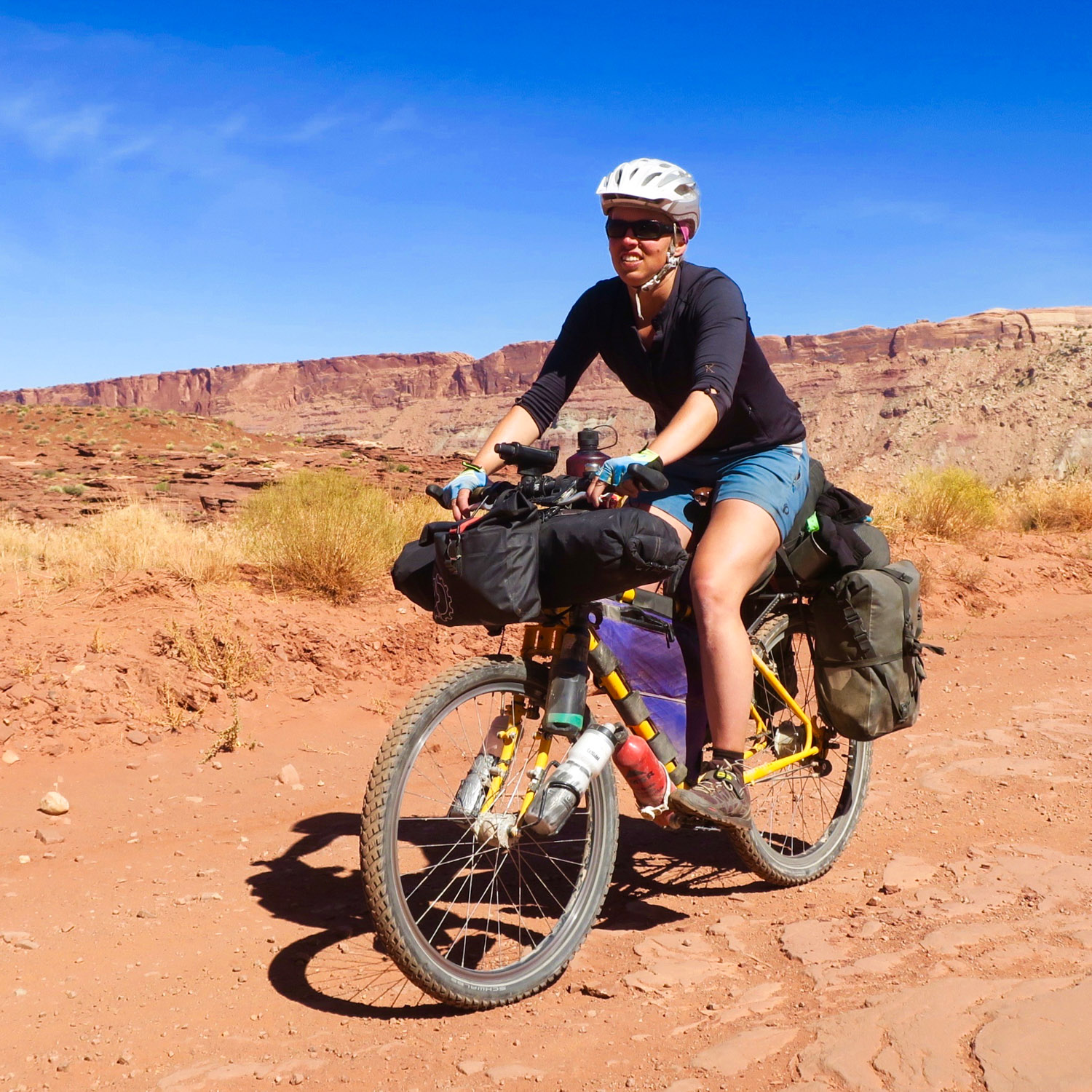
About Tara Weir
Tara Weir has pedalled around 37,000 kilometers through 21 countries. She divides her time between bikepacking and working outdoors as a forestry technician in Canada, where she earns money to fund her trips. There doesn’t seem to be an end to her desire to travel the world by bike. Find more on her blog, FollowMargoPolo.com.
Please keep the conversation civil, constructive, and inclusive, or your comment will be removed.








